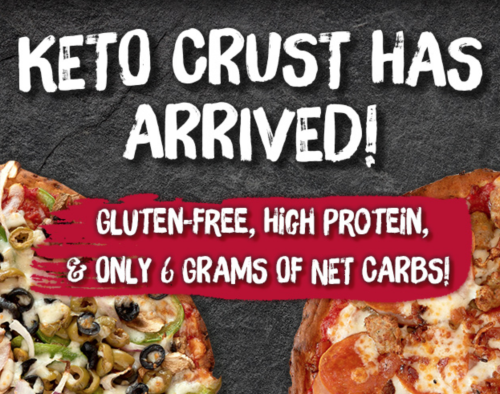
For those of us who’ve waged a lifelong “battle with the bulge,” the pitfalls of dieting are all too familiar. Anybody can follow a difficult eating plan for a few weeks, or at least a couple. But eating in a way that seriously reduces calories or carbs for the long haul – a way that REALLY results in long-term weight loss? Well, that’s a different story!
There are any numbers of eating plans that can bring about weight loss and help you feel better, but, for many, they are simply not sustainable. When I use the word “sustainable” in this context, I am meaning a weight reduction plan that you can tolerate (maybe even enjoy?) for as long as it takes to reach your goal, and then, beyond that, something adaptable which can be maintained in some form for the rest of your life. A plan that you don’t simply tolerate, but choose as a lifestyle.
So why aren’t most diets sustainable? Because the approach is, in essence, to “help you learn to like new things” and to replace the foods you currently LOVE (read carbs) with foods that you will, hopefully, someday, LEARN to love.
Show of hands – how many of you reading this have successfully learned to love something you couldn’t stand simply because you were forced to eat IT instead of the foods you love? Hmm…not seeing any hands. That approach simply doesn’t work.
Think about vegetarians or vegans. When someone decides to become either of those, they don’t simply start grazing on the grass and weeds in the back yard. They learn to fix tasty recipes that fall within the boundaries they have imposed on themselves, and find products that are acceptable replacements for the things they really miss – like meat! That’s why, when you visit your grocer’s frozen food section, you will find a vast area of freezer real estate devoted to vegetables that are trying to be meat!
People on special eating plans have always faced the problem of trying to discover foods that are even a little bit close to what they love to eat, and are used to eating. And for years this has been very difficult. Because no matter how hard you try to make kale or seaweed taste like steak, kale is still kale! (If you love kale, blessed are you. And you’re probably NOT FAT!)
I have been able, in years gone by, to lose as much as 80 pounds, and keep it off for as long as 3 years. But eventually, I always “fall off the wagon” and end up gaining it all back because I get to the point where I feel like I just HAVE to have that one thing that’s forbidden on my diet. Then it’s 20 things. Then it’s everything. And 3 to 4 years of my life focusing on losing weight is just wasted effort and I’m back to square one.
Then, along came Ketogenic eating, or Keto. Keto gave me back fats (in Keto, many fats are good because they become the primary fuel of your body, replacing carbohydrates), which was a HUGE help. But beyond that, Keto opened the door to a whole subculture of people supporting each other with recipes, tips, and tasty replacements for the carbs I missed and was used to eating.
In short, Keto presented me with an easily sustainable approach to eating that turned my body into a fat-burning machine that targeted (and targets) my stored fat, using it for energy.
2018-2019 were breakout years for Keto, because “Keto went mainstream” and food manufacturers began to see the cash cow that Keto could be. The result has been a “feeding frenzy” (pun intended) as food companies have started catering (pun intended) to what has become an enormous block of consumers, all looking for delicious replacements for their carb-loaded favorites. Candy, ice cream, baked goods, etc. with low or no carbs and high fat are emerging each day. And they’re really good! More on these discoveries in subsequent posts.
Sustainability Is the Key!
For those of us who are serious carnivores, a Keto diet is a dream. A moderate amount of protein is best for a Keto eating plan, and nearly all meats, fish, and seafoods are carb-free. And fats! Imagine: an eating plan where bacon, mayo, and butter are a GOOD thing. Grilling meats and frying burgers and eggs in butter all contributed to sustainability for me.
When I first dove into Keto, I discovered the class of sweeteners called “sugar alcohols.” These sweeteners taste MUCH more like sugar than artificial sweeteners like Equal or Splenda – and they are naturally occurring, not man-made. Erythritol has pretty much become the “industry standard” in no-carb sweeteners. And these sugar alcohols have NO effect on blood sugar, making them perfect for diabetic and low-carb diets.
(For a thorough discussion of low-carb sweeteners, please follow this link:
https://www.dietdoctor.com/low-carb/sweeteners)
So now I had the sweet part. But what about flour for cakes and breads? It turns out that NUTS are the answer! Almond flour and coconut flour (and especially a mixture of the two) make it possible to make incredible-tasting baked goods that rival anything made with flour. And these are just ground-up nuts!
Early on, because SOMETHING sweet was a “necessity” for me to sustain a long-term eating plan, I explored lots of recipes and finally ended up inventing a recipe for cakes. I call them Magic Cakes because when I eat them, I lose weight. I just do. And I eat less because they are incredibly filling. Like Magic! They are WAY low-carb, and high-fat. And they taste fabulous. I have 9 flavors. My Magic Faux Banana Nut Bread is virtually indistinguishable from the real thing. And don’t get me started on my Magic Chocolate Nut Muffin Cake. Decadent and delectable!
I made my Magic Cakes a part of my Keto lifestyle and stopped carb cravings in their tracks. The grass is greener on MY side, so I don’t yearn for other things.
In subsequent posts, I plan to spotlight some of the new Keto products that make it easier and easier to sustain this healthy lifestyle. And they are phenomenal! Stay tuned, and may God bless and help all of you who are engaged in this battle to feel better and lose excess weight.
(Magic Cake recipes and information are available for download here.)

Disclaimer:
[This article, and other articles in the Keto category on this website, is meant to help people who are engaged in, or considering, the ketogenic style of eating. This eating style is not for everyone, and serious medical considerations are involved in choosing this eating style and/or using the products and methods mentioned here. No one should undertake a Keto dietary journey without getting a green light from their doctor. Nothing in these articles should be construed as medical advice, and readers assume all risks and responsibility for their own implementation of any these suggestions and recommendations.]



